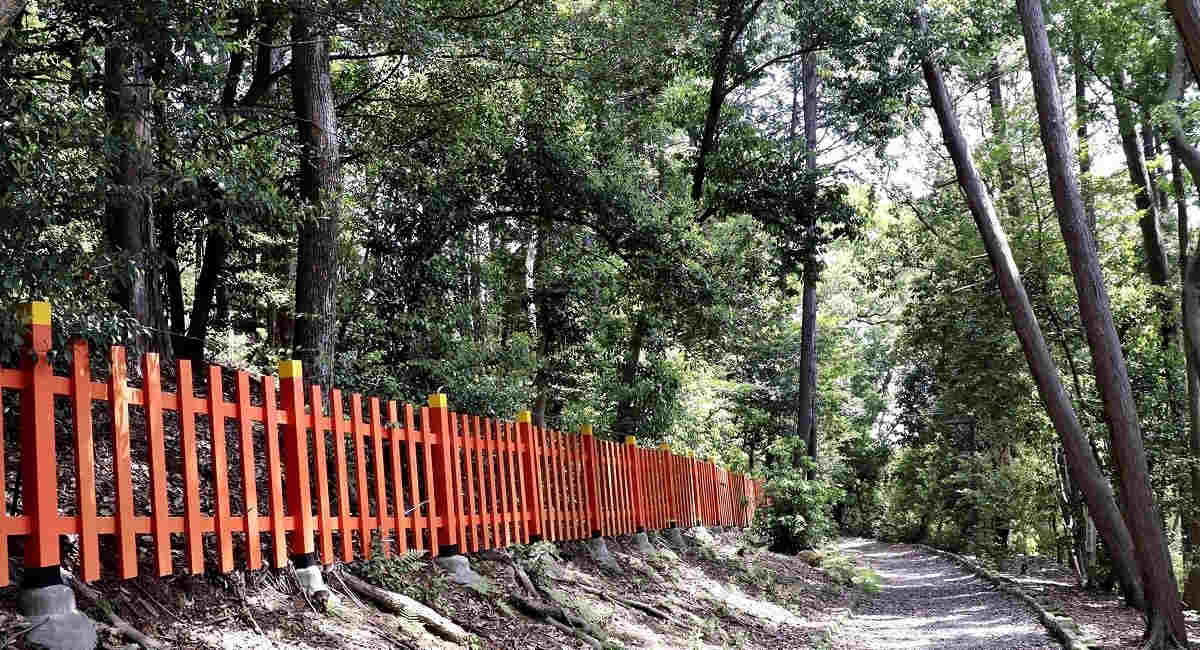
A road that leads to Kenkun Shrine, southeast of Mt. Funaoka in Kyoto
11:36 JST, May 20, 2023
KYOTO — Tourists visiting Kyoto have quite a number of hills and small mountains to choose from that are easily accessible from the city center. Climbing for just a short while offers a panoramic view of Kyoto’s city center and is also a great way to get some exercise.
Mt. Funaoka, north of the city center, is more a graceful hill than a mountain. Said to resemble a boat laid upside down, its name literally translates to “boat hill,” and it was a holiday resort since ancient times thanks to its excellent view. About 1,000 years ago, the famous writer Sei Shonagon supposedly praised it, saying, “When it comes to talking about a hill, Funaoka is the one.”
The elevation difference between the summit and the foot of the mountain is 45 meters. However, when entering from Kenkun Shrine in the southeast, the difference is only 30 meters. This means the top can easily be reached within a 10-minute walk, with the hustle and bustle of the city quickly replaced by birdsong.
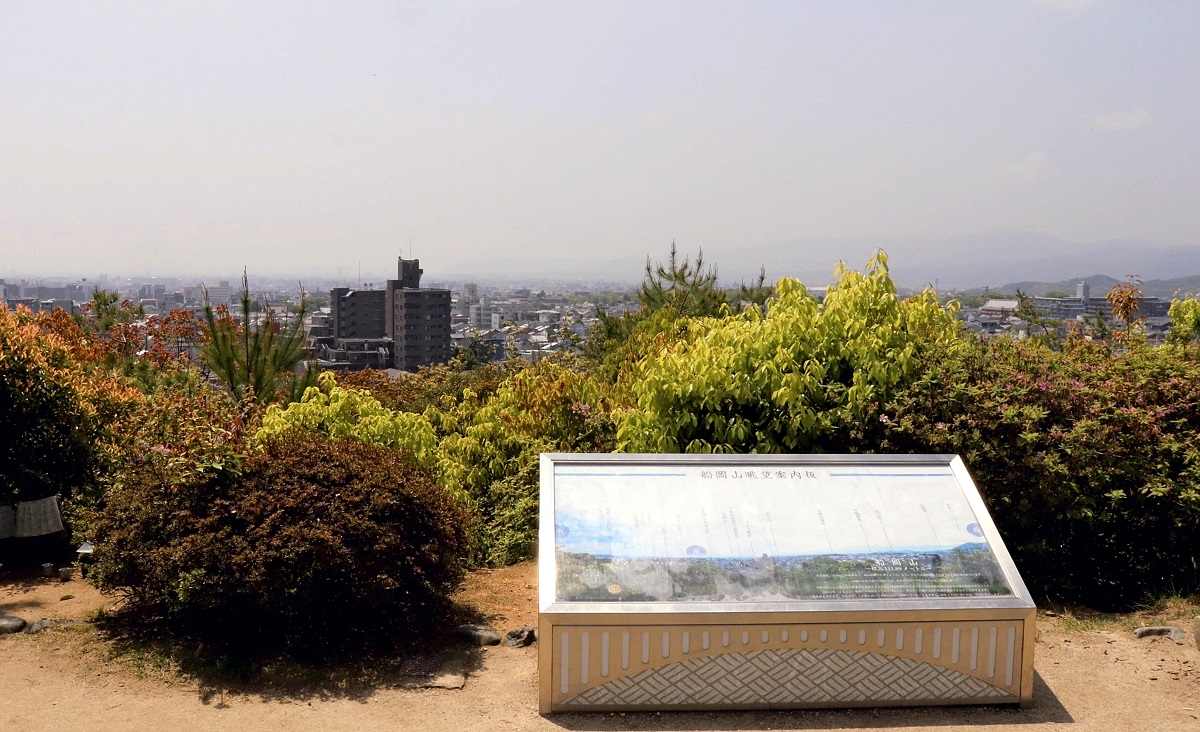
The view from the summit of Mt. Funaoka. Although it was a hazy day when this photo was taken, you can get a panoramic view of mountains in the west on a clear day.
The summit, about 112 meters above sea level, is perfect for admiring Kyoto Tower.
It is said that Emperor Kanmu decided to locate the capital here after viewing the Kyoto Plain from the top of Mt. Funaoka in the late 8th century.
The area around the mountain is the northern entrance to the Kyoto capital and was the site of a large-scale civil war in the 15th century known as the Onin War. Lasting for eleven years, the war was fought between the so-called eastern and western armies, both led by prominent generals and other figures. The battle marked the beginning of Japan’s Sengoku (warring states) period.
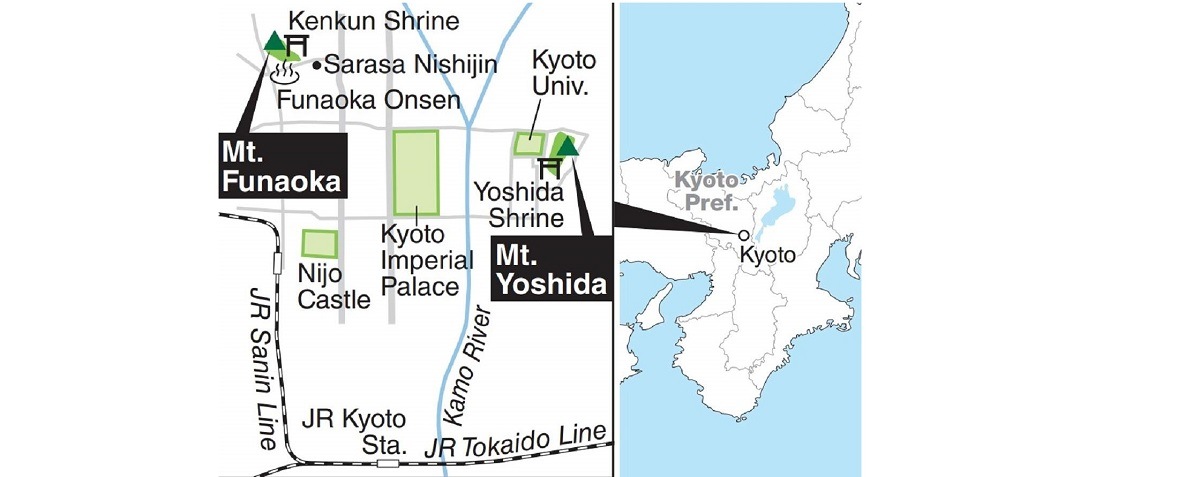
The area around Mt. Funaoka is called Nishijin, or the western camp, because the western army used it as a camp. Today, the area is widely known for Nishijin textiles. Visitors can learn more about the area’s historical significance by reading various signs placed on the mountain.
The mountain is familiar to many people thanks to its low elevation. In the mornings, many enjoy calisthenics in an open space halfway to the top, and during the daytime, it is mostly crowded with parents and children. The mountain is also a place for members of the community to interact. One example is a monthly open-air market with a variety of stalls, including ones for food.
“Mt. Funaoka has a sense of warmth thanks to the many people who gather here. It’s the city’s central green heart,” said Koki Segawa, 23, one of the open-air market coordinators.
Attractive places nearby
Visitors can also stop by nearby shopping streets that are home to stylish cafes and stores, like Sarasa Nishijin, a public bathhouse-turned-cafe with walls adorned with colorful majolica earthenware tiles made in Japan.
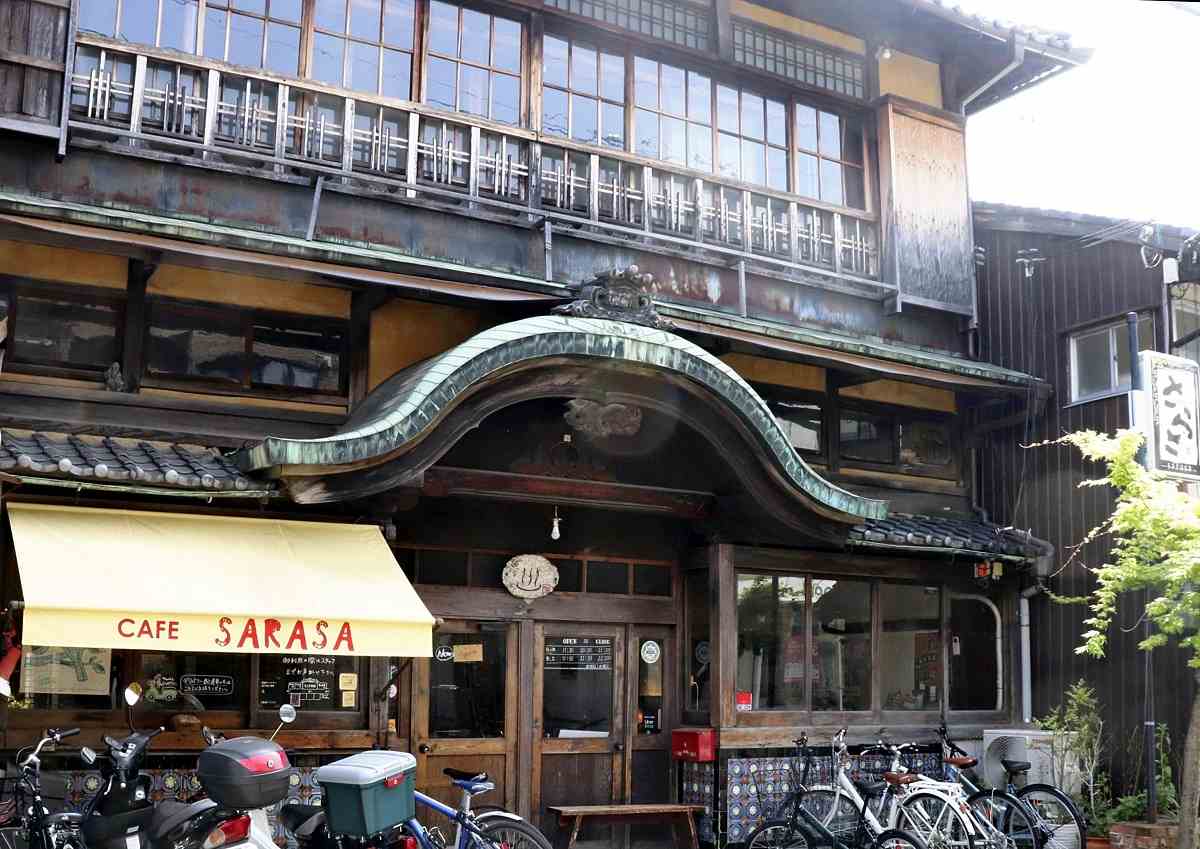
Sarasa Nishijin, a public bathhouse-turned-cafe.
Don’t forget to also visit Funaoka Onsen, a public bathhouse whose changing rooms and bathing areas are government-designated tangible cultural properties, and is a perfect place to relax after climbing the mountain.
Residents take care of divine place
KYOTO — Located east of Kyoto University, Mt. Yoshida is home to a venerable shrine and is considered a place where the deities gather. Yoshida Shrine was founded in 859 as the guardian of the capital, called Heiankyo at that time.
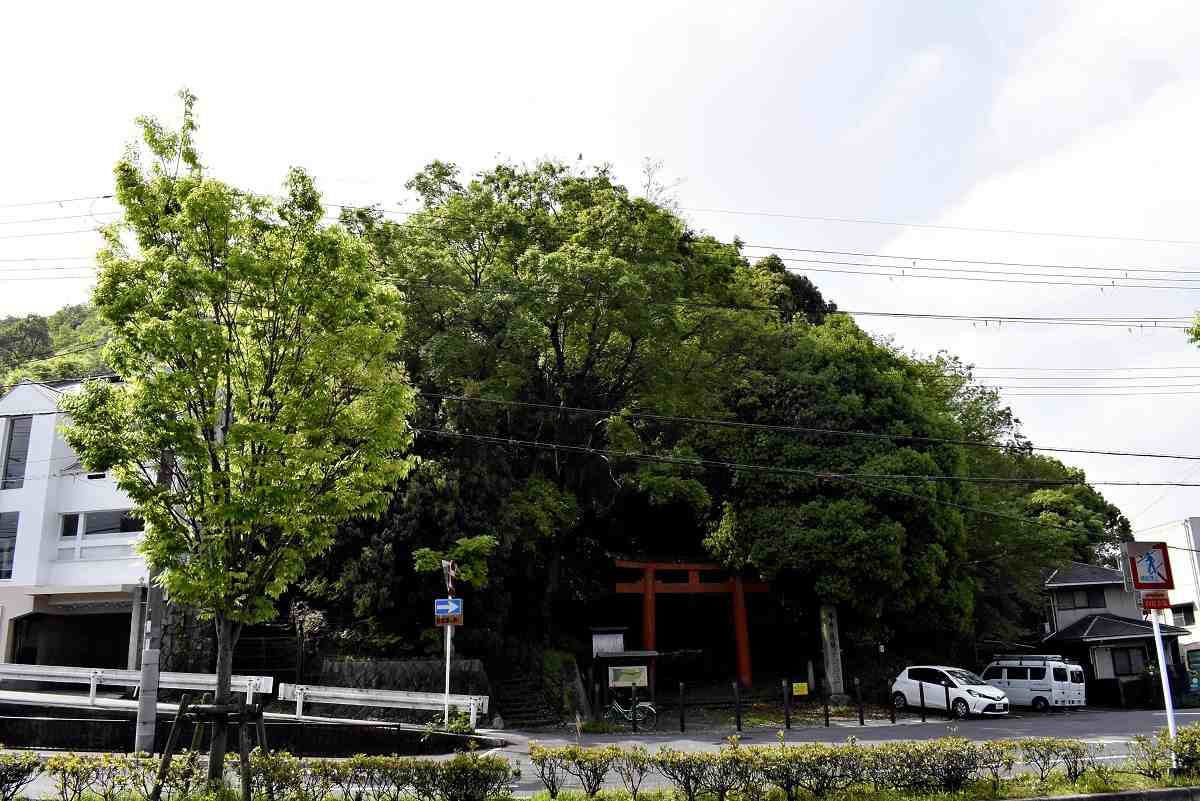
Mt. Yoshida, seen from the north
I recently climbed the mountain for the first time, even though I have been working in Kyoto for quite a long time.
With the clock tower of Kyoto University on my left, I walked the main approach and passed through the torii gate of the shrine, and then walked up the stone steps while listening to wild birds singing. On the way, a woman strolling greeted me with a “good morning,” while a man exercising said, “I climb [the mountain] every day.”
Mt. Yoshida is about 105 meters above sea level and easy to hike thanks to its concrete paths. Climbing to the summit and back down with breaks in between took about 40 to 50 minutes. It is a perfect mountain to climb for refreshing oneself. The intensity of the exercise was just enough for me, in my 60s, to work up a slight sweat.
A group of local residents maintain the forest and remove weeds about once a month. Visitors to the mountain can now observe the city center thanks to their hard work.
“We’d like to continue our efforts and make the mountain even more attractive,” said a 74-year-old man who is a member of the group.
Related Tags
"Features" POPULAR ARTICLE
-

Sanrio to Open Museum in Yamanashi Pref. Dedicated to Founder, Exhibits Include Hello Kitty, Other Characters
-

Autumn Foliage Surrounds Visitors to Tokyo’s Showa Kinen Park
-

My Daughter No Longer Speaks to Me, But I Want to See Her and My Grandchild
-

Kumamoto: Public Bath Refurbished as Library Where You Can Chat, Take Photos
-

Frozen Vegetables: Demand Rises for Convenient, Tasty Domestic Produce
JN ACCESS RANKING
-

Tokyo Economic Security Forum to Hold Inaugural Meeting Amid Tense Global Environment
-

Keidanren Chairman Yoshinobu Tsutsui Visits Kashiwazaki-Kariwa Nuclear Power Plant; Inspects New Emergency Safety System
-

Imports of Rare Earths from China Facing Delays, May Be Caused by Deterioration of Japan-China Relations
-

University of Tokyo Professor Discusses Japanese Economic Security in Interview Ahead of Forum
-

Japan Pulls out of Vietnam Nuclear Project, Complicating Hanoi’s Power Plans

























